Dedicated to advancing scholarly and public understanding of the past, present, and future of western North America, the Center supports research, teaching, and reporting about western land and life in the United States, Canada, and Mexico.
Spring Quarter Courses on the American West
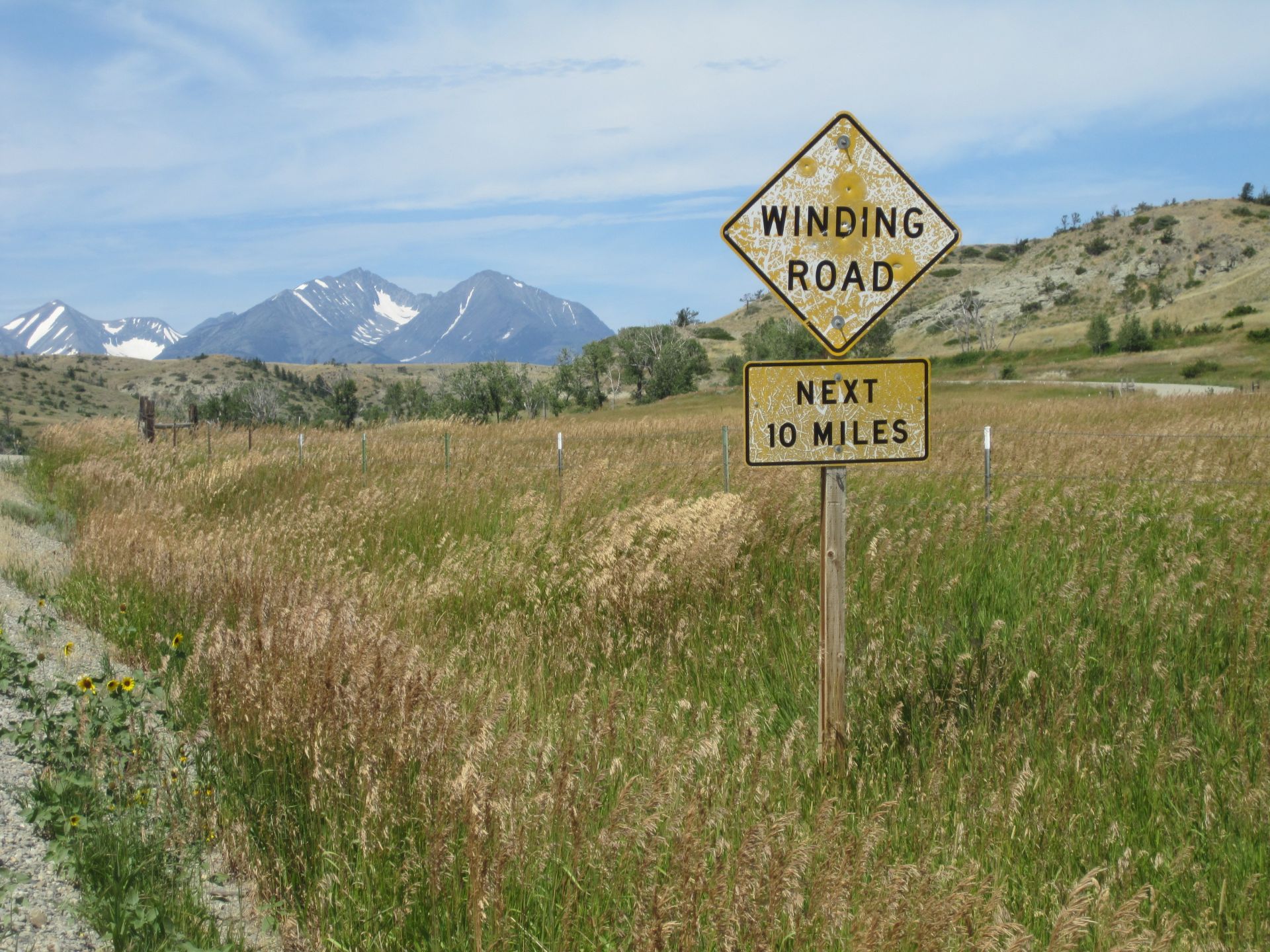
This week, students return from spring break to begin the new quarter at Stanford. Throughout the year, Stanford students interested in the American West have a variety of courses from which to choose in departments across the university.
A quick glance at the courses offered this spring term confirms that the study of the American West attracts students and scholars from many disciplines. Courses available this quarter include "California's Minority-Majority Cities," "Federal Indian Law," "Ecology and Natural History of Jasper Ridge Biological Preserve," "Oaxacan Health on Both Sides of the Border," "LGBT History in the United States," "Field Seminar on Eastern Sierran Volcanism," the "Flor y Canto Poetry Workshop," and many more.
Alexandra Koelle, a postdoctoral scholar at the Bill Lane Center for the American West, is teaching a course entitled "Critical Theory and the Environment," cross-listed in American Studies, Anthropology, and the program in Modern Thought and Literature. Students in Koelle's class will examine a variety of theoretical approaches to conceptualizing the environment, including approaches from cultural studies, postcolonial theory, and feminist science studies. In the second half of the course, students will apply these methods to five topics that are crucial for understanding the American West: land use, water, agriculture, toxics, and animals.
On California: A Dense Hotbed of Urbanism, U.S. Census Reveals
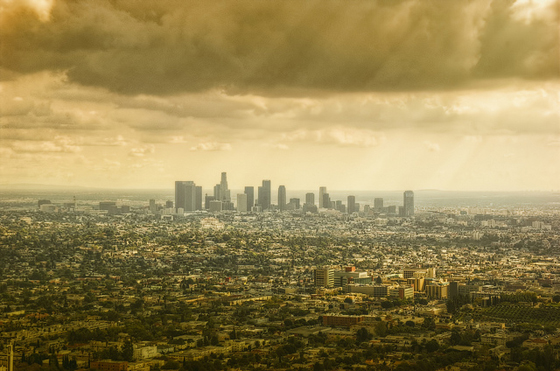
Gold LA, photo by Neil Kremer
The U.S. Census released a report on urban population on Monday, and in it was a perhaps-unexpected fact: Of the ten most densely populated cities, seven of them are in California. Indeed, California’s showing was so strong that the great bastion of urbanism in the United States — the New York-Newark metro area — just barely made the top five.
John King, the San Francisco Chronicle’s urban design critic, interviewed a number of experts about California’s unique status. Among them was Jon Christensen, executive director of the Bill Lane Center for the American West at Stanford University. One of Christensen’s quotes caught my attention, so I followed up with him via email to explore why California is such a hotbed of urbanism. Our correspondence follows:
Tim De Chant: What’s special about California that it has so many dense urban areas?
Jon Christensen: The American West, in general, and California, in particular, is really a metropolitan region and has been for a long time. California, Nevada, Utah, and Arizona are among the 10 most urbanized states. The settlement pattern in the West is one of concentrated cities surrounded by wide open spaces — often substantially made up of public lands. This is true of California as well.
So it’s really the interplay of the history of cities and their hinterlands in the American West that explains why California has such dense urban areas. The fact that they are among the most dense urban areas in the country is also a result of population growth in California. The state has been and still is a great place for many people to live.
Writing the Rails: Scholar Richard White Gives Dimension to the History of the Railroad
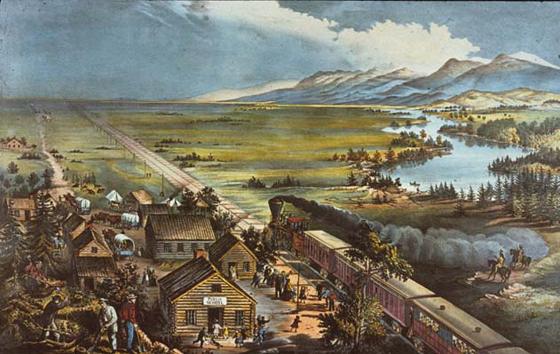
Across the Continent: Westward the Course of Empire Takes Its Way, Currier & Ives lithograph, 1868
Railroaded: The Transcontinentals and the Making of Modern America, a new book by historian Richard White, is “smashingly researched, cleverly written, and shrewdly argued all the way through,” says William Deverell, the director of the Huntington-USC Institute on California and the West. The book, 12 years in the making, is a “powerful, smart, even angry book about politics, greed, corruption, money, and corporate arrogance, and the America formed out of them after the Civil War,” he adds.
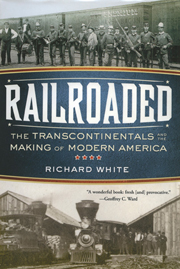 White, the Margaret Byrne Professor of American History at Stanford University, spoke to Huntington Frontiers magazine about the way he balanced his own unique brand of storytelling with an equally creative use of historical data through something called the Spatial History Project, a collaborative community of scholars who use visual analysis and digital technology to identify patterns and anomalies in their research.
White, the Margaret Byrne Professor of American History at Stanford University, spoke to Huntington Frontiers magazine about the way he balanced his own unique brand of storytelling with an equally creative use of historical data through something called the Spatial History Project, a collaborative community of scholars who use visual analysis and digital technology to identify patterns and anomalies in their research.
How should we read the book—as business history, environmental history, history of technology, or all of the above?
All of the above. I weave various strands of history together, so anybody who is looking for a sort of clean, direct narrative— in which one thing determines all—has probably found the wrong book. I attempt to bring in a whole variety of subjects that influenced railroads and show why they came to be in the late 19th century.
Sunset Magazine's 2012 Environmental Awards

Photo courtesy of The Wildlands Conservancy.
Sunset magazine announces the winners of its "2012 Environmental Awards" in the pages of its March issue now on newstands and online. Sunset editors and writers, including Sophie Egan, a former research assistant and intern at the Bill Lane Center for the American West, searched the West for the winners. Awards were given in categories such as Best Wild Kingdom, which celebrates one of the nation's biggest private conservation land purchases, Best Shoreline, and "Capital of Green," which was awarded to Washington's Olympic Peninsula for two separate projects that preserve beautiful rivers and forests.
The magazine's editors and an esteemed panel of judges, including Jon Christensen, executive director of the Bill Lane Center for the American West, also honor Education Programs, such as The Wildlands Conservancy in Southern California (photo above), and Visitor Centers helping to promote ongoing interaction with and appreciation of the environment.
"The projects and people we honor this year are outstanding in every way," said Peter Fish, Sunset editor-at-large. "We received massive amounts of emails nominating candidates and almost all were very good, so it was a difficult choice."
"The recession has had a silver lining when it comes to the environment," continued Fish, who served as one of the award program's judges. "Land development and competition from real estate developers is down, meaning that land trusts have a better chance of obtaining and protecting land."
The judging panel also included Brian Kahn, host of Montana Public Radio's Home Ground and author of Real Common Sense; and Jenny Price, a research scholar at the UCLA Center for the Study of Women, an environmental historian and one of the founders of Los Angeles Urban Rangers.
Sunset magazine was founded in 1898, and under the guidance of the Lane family in the 20th century became the premier guide to life in the West, covering the newest and best ideas in Western home design and garden, food and entertaining, and regional travel in 13 Western states. It is published in five zoned monthly editions-Pacific Northwest, Northern California, Southern California, Southwest and Mountain-showcasing the region's unique lifestyle and noteworthy destinations and inspiring its nearly five million readers to achieve the dream of living in the West.
Bill Lane Center Fellowships for Scholars of the West 2012-2013

Photo by Linda A. Cicero, courtesy of Stanford News Service.
The Bill Lane Center Fellowships for Scholars of the West invites letters of inquiry from scholars who would like to spend time in residence at the Center during the 2012-2013 academic year. The Center has funding available to support scholars whose work intersects with the mission and programs of the Center, who can contribute to the scholarly community at the Center, and who can advantageously use time at Stanford to advance their own scholarly projects. The terms of funding are negotiable depending on the length of the fellowship and any cost-sharing funds that scholars can bring from other institutions.
We are also able to offer visiting scholar status to qualified applicants who bring their own funding and have projects on the American West that are particularly suited to research at the Center and Stanford University.
President Obama gives the National Humanities Medal to Stanford literary scholar Ramón Saldívar

Ramón Saldívar receiving the National Humanities Medal from President Obama.Courtesy of whitehouse.gov.
In a White House ceremony on Monday, President Obama awarded a National Humanities Medal to Stanford English and comparative literature Professor Ramón Saldívar.
His teaching and research, centering on globalization, transnationalism and Chicano studies, were recognized for "his bold explorations of identity along the border separating the United States and Mexico."
"You've helped guide our growth as a people," Obama told the nine medal winners. The awards are for outstanding achievement in history, literature, education, philosophy and musicology. This year's recipients include poets, historians and philosophers.
The medals are described as honoring those whose work deepens the nation's understanding of the humanities. Saldívar, the Hoagland Family Professor in Humanities and Sciences at Stanford and a member of the Bill Lane Center for the American West's faculty committee, was selected by the National Endowment for the Humanities for his literary analysis, which "beckons us to notice the cultural and literary markings that unite and divide us."
Bringing "Real Rural" California into The City

Photographs from "Real Rural" by Lisa M. Hamilton
On their morning commutes this winter, many BART riders will look up from their newspapers, iPads, Kindles, and smartphones to see the faces of farmers, rodeo riders, young smalltown boxers, and country poets staring back at them, thanks to an innovative public information campaign designed to connect urban Californians with their rural compatriots.
"Real Rural" is the product of a collaboration between writer and photographer Lisa M. Hamilton, the nonprofit organization Roots of Change, the Bill Lane Center for the American West, and the Creative Work Fund, which supports artists working in the nine Bay Area counties. On a media fellowship from our Center, Hamilton spent much of 2011 criscrossing California, capturing offbeat portraits of the state's remarkable scenery and seeking out stories about the diverse residents of what she calls "the rest of California."
Hamilton writes:
Real Rural is meant to start a new conversation, between two parts of California that are at best disconnected, and often at odds. Many people in our cities think they already know the story of rural California: who’s there and how they think, their values and their struggles. I have aimed to demonstrate that in fact this place and its people are far more diverse and dynamic than most of us from outside realize.
Working with Geoff McGhee, the Center's creative director of media and communications, and the San Francisco design firm MacFadden and Thorpe, Hamilton has crafted an elegant, interactive and multimedia rich website — realrural.org — that tells the stories of 20 rural Californians, as well as posters on BART. Later this year, the project will be featured on mass transit and billboards in Los Angeles and Sacramento, and in exhibition at the California Historical Society in San Francisco.
"Real Rural" has garnered extraordinary media attention, including a feature in the "Insight" section of the Sunday San Francisco Chroncle, an hour-long interview with Lisa Hamilton and Jon Christensen on KQED Radio's "Forum," a feature story on public radio's statewide "California Report," a feature on National Public Radio's "Picture Show" online, and numerous other newspaper, radio, and television features.
We hope you can join us to celebrate "Real Rural" California at the California Historical Society in downtown San Francisco on Tuesday, January 31, from 5 to 7pm, where Lisa will talk about the journey she took to find these extraordinary stories from the rest of California. Please click here for more information and to RSVP.
Call for Participants: Rural West Conference in October 2012
Photograph: Native American Woman with Basket of Huckleberries. OSU Archives WilliamsG:USFS281580 via Flickr Commons
Building on the work of the Rural West Initiative, the Bill Lane Center for the American West will hold a conference titled "The Rural West: Toward a Regional Approach to Common Issues." Scholars, journalists, policymakers, and others are invited to propose papers for the conference, which will be held October 12-14, 2012 at the David Eccles Conference Center in Ogden, Utah.
Participants will engage in seminar-style discussions of pre-circulated papers. Following the conference, selected peer-reviewed papers will be published in Rural Connections, a publication of the Western Rural Development Center at Utah State University.
For more information, please view the Call for Participants. »
Ecological Urbanism for the 21st Century
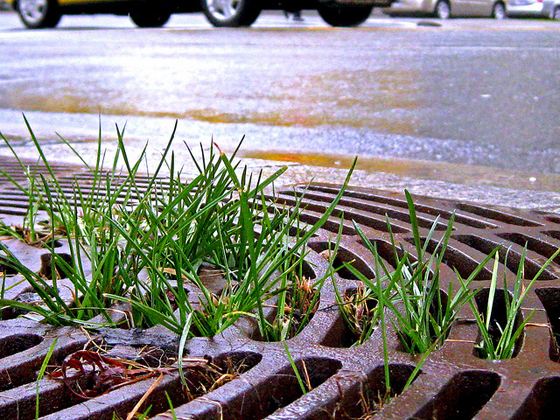
In the age-old cultural ebb and flow between city and country, the city has made a remarkable turnaround. Not so long ago, cities were seen as a cancer that would have to be contained if we were to save the planet. Now cities are more often portrayed as the best solution to what ails life on earth.
Even more remarkably, this turn has taken place at the same time as a crucial demographic shift: Globally, more people now live in cities than in the countryside. During a similar transition in England in the 19th century, there was a romantic cultural turn to the pastoral, as Raymond Williams observed in his classic The Country and the City. In the United States, in the early 20th century, this demographic transition was marked by President Theodore Roosevelt's creation of a Commission on Country Life amid profound cultural angst about the fate of rural America.
We've come a long way from the Roosevelt commission's concern with the "deficiencies" of country life, although the Obama administration recently created a White House Rural Council to "address challenges in rural America." To be sure, we still hear plenty of paeans to that "real America," though only one out of five Americans lives there now, as well as to "wild nature," though most ecologists have come to accept that virtually nothing about nature is untouched by humanity.
The dominant discourse these days, however, unabashedly celebrates the city as the future, in books with titles such as David Owen's Green Metropolis: Why Living Smaller, Living Closer, and Driving Less Are the Keys to Sustainability (Riverhead, 2009) and Edward Glaeser's Triumph of the City: How Our Greatest Invention Makes Us Richer, Smarter, Greener, Healthier, and Happier (Penguin Press, 2011).
We share much of their excitement and optimism, but we are wary of this urban triumphalism. We worry that it is blinding us to problems as well as to opportunities for understanding the vital relationship between the country and the city, and right at a time ripe for innovation in the academic fields most concerned with this relationship, particularly urban planning and ecology.
Read the rest of this essay in The Chronicle of Higher Education's Chronicle Review.




